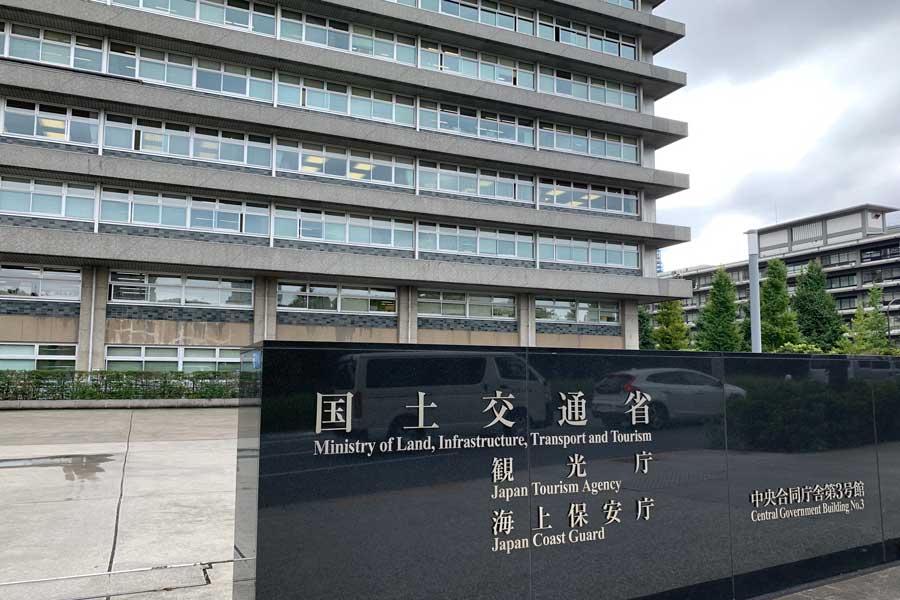
Japan’s MLIT Issues Heavy Snow Warning for December 3–4
The Hokuriku Shinkansen, which connects Tokyo with Kanazawa Station, will be extended to Tsuruga Station on March 16th, getting one step closer to its final goal of reaching Shin-Osaka Station.
The newly opened section between Kanazawa and Tsuruga Stations is 125 kilometers long, featuring five intermediate stations including Komatsu, Kaga Onsen, Awara Onsen, Fukui, and Echizen Takefu along the way. Notably, a portion of the Kanazawa-Komatsu Station section has already been functioning as a forwarding line to the Hakusan General Vehicle Depot, making the newly constructed section 115 kilometers long.
There will be a total of 14 round trips directly connecting Tokyo Station with Tsuruga Station, 9 of which are the faster “Kagayaki” service, while the remaining 5 are the “Hakutaka”, stopping at each station. Additionally, the “Tsurugi”, serving the Hokuriku area, will make 18 round trips between Toyama and Tsuruga Stations, and 7 round trips between Kanazawa and Tsuruga Stations. Transfer services at Tsuruga Station for the “Thunderbird” express to Osaka and the “Shirasagi” express to Nagoya are also available. Furthermore, 5 “Tsurugi” trains not connecting with any express services are scheduled during the morning and evening hours.
The express trains shorten the travel time between Tokyo and Tsuruga Stations to 3 hours and 8 minutes, and between Kanazawa and Tsuruga Stations to 41 minutes, thereby reducing the travel time between Tokyo, Nagoya, Osaka, and the Hokuriku region. For instance, the current shortest travel time by the “Thunderbird” express between Osaka and Kanazawa Station of 2 hours and 31 minutes will be cut down to 2 hours and 9 minutes, despite the added step of transferring at Tsuruga Station.
However, the benefit of the Tokyo-Tsuruga Station trip is limited since the route via Maibara Station remains faster. Yet, the travel time between Tokyo and Fukui Station will be reduced from the current 3 hours and 27 minutes to 2 hours and 51 minutes. Awara Onsen, known as the “back parlor of the Kansai region,” will also become significantly more accessible from Tokyo, at only 2 hours and 51 minutes away. If the travel time falls below 3 hours, it might become feasible as a day-trip destination. Fukui Prefecture is focusing on reducing travel times to facilitate easier visits between families living apart, schooling, and homecoming trips, especially for those from the Tokyo area.
On February 1st, a press preview ride was held before its opening, offering an early experience of the new section.
Tourists are gradually returning to Kanazawa Station. From platform 12 for the Shinkansen, we boarded the gleaming W7 series (W19 formation).
After leaving Kanazawa Station, the train sped up, passing the Hakusan General Vehicle Depot on the left and racing through the Kanazawa plains. The preview train stopped at Awara Onsen, Fukui, and Echizen Takefu stations, bypassing Komatsu and Kaga Onsen stations.
Komatsu City, famous for its salt-grilled soba, is swiftly passed by the train. To the left of the window, one of the Kaga Three Lakes, Koibagata, stretches out. Although the weather was unfortunate on the day, it’s said that on clearer days the view extends to the peaks of the Hakusan Mountains in the background. Around Koibagata, approximately 1,300 cherry blossom trees line the area, potentially offering splendid views of the waterside scenery, the Hakusan Mountains, and fully bloomed cherry blossoms from the train windows during the flowering season.
After passing Kaga Onsen Station, the train arrives at Awara Onsen in about 6 minutes. The station building, designed to emulate the atmosphere of a hot spring resort, makes use of local timber, emphasizing its “Japanese taste.”
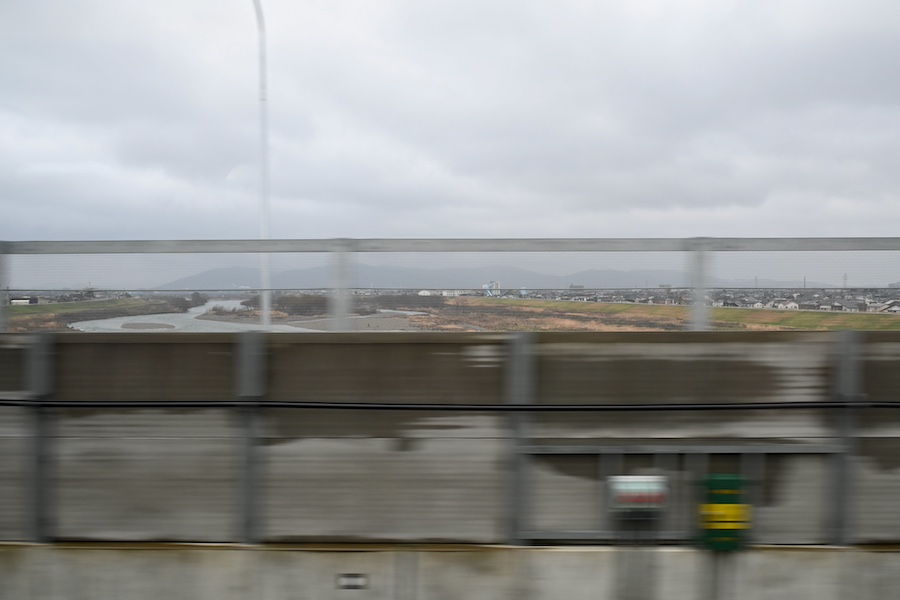
The Kuzuryu River Bridge, a joint Shinkansen-road bridge, though the illumination poles of the prefectural road are barely visible from the train window
Between Awara Onsen and Fukui Stations, the train crosses the Kuzuryu River, Fukui Prefecture’s representative first-class river. This Kuzuryu River Bridge is constructed as Japan’s first joint Shinkansen-road bridge, whereby the Hokuriku Shinkansen and the parallel Fukui Prefectural Road 268 share pillars. The Shinkansen runs between the up and down lanes of the county road, but the high sound barriers on both sides of the tracks make it hard to see the cars running alongside.
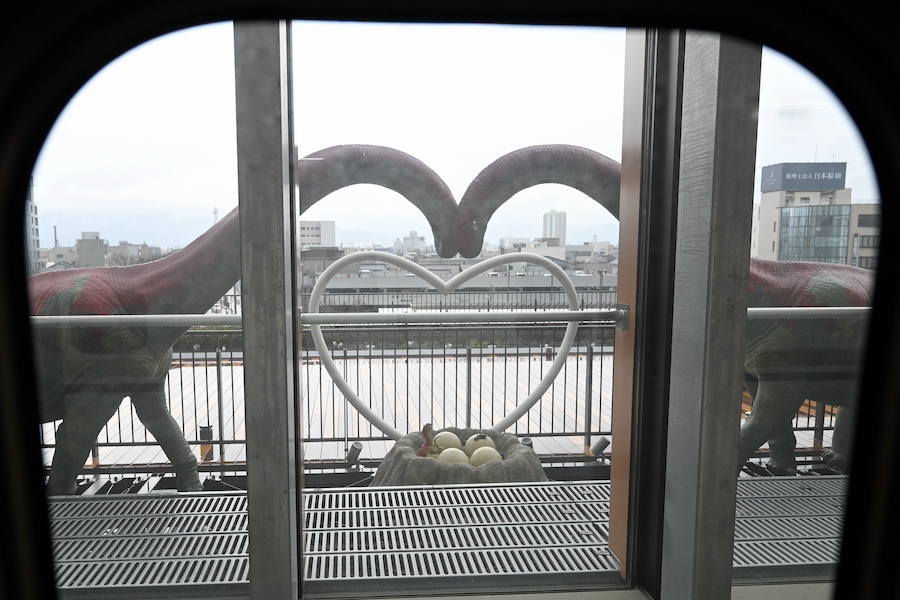
The ‘Fukuiraptor’ dinosaurs, a couple watching over their eggs on the roof of the Fukui City Tourism Exchange Center
Fukui Station, where all the trains, including the express ones, stop, is designed with a theme of eternal history and nature, fitting the ‘Dinosaur Kingdom’ of Fukui. During the stop, the “Fukuiraptor” dinosaur couple, discovered in Fukui Prefecture, were seen guarding their eggs outside the train window.
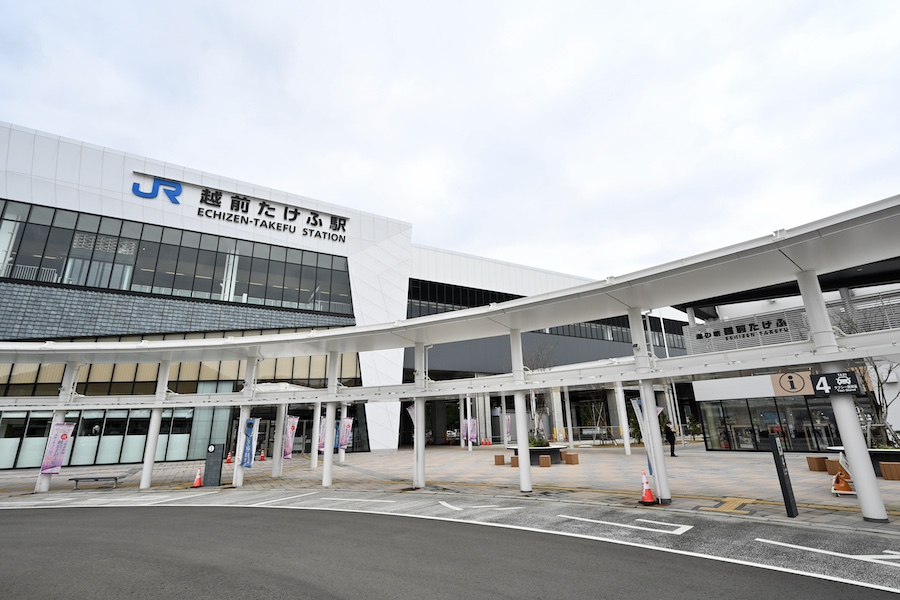
Echizen Takefu Station. The neighboring Echizen City is getting attention as the place related to Murasaki Shikibu, the protagonist of the historical drama ‘Radiant to You’
After leaving Fukui Station, it takes about 9 minutes to reach Echizen Takefu Station, the only new station in the extension and the sole Shinkansen station. Located approximately 2.7 kilometers east of the existing Takefu Station on the JR conventional line, it is next to “Roadside Station Echizen Takefu”, which has been operational since 2013, offering Echizen crab cuisine in its restaurants and tourist information services.
A free parking lot with about 600 spaces is available in front of the station, and a car rental shop is scheduled to open in time for the Shinkansen launch. Utilizing the nearby Hokuriku Expressway’s “Takefu” Interchange, just about 600 meters away, promises to make it a hub for tourism in the Reihoku area.
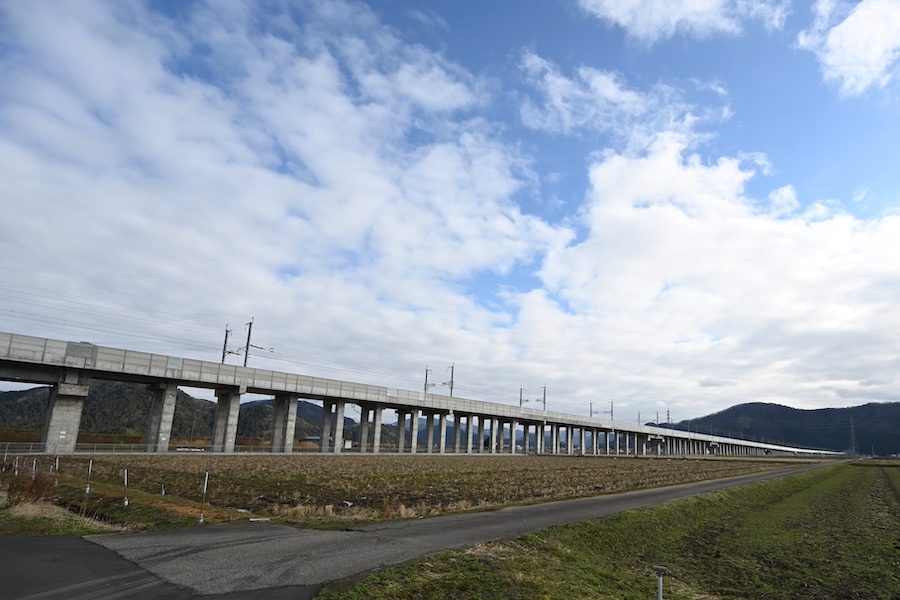
Between Kanazawa and Echizen Takefu Stations, flat landscapes like the Kanazawa and Fukui plains continue (photo is between Fukui and Echizen Takefu Stations)
The section between Kanazawa and Echizen Takefu Stations is relatively flat, but the terrain becomes more mountainous towards Tsuruga Station, increasing the number of tunnels. The third tunnel after departing Echizen Takefu Station is the Shin-Hokuriku Tunnel, the longest in the extension at 19.76 km, ranking it sixth in length among existing railway tunnels in Japan. It is the second longest tunnel in the Hokuriku Shinkansen after the Iiyama Tunnel between Iiyama and Joetsu Myoko Stations, which is 22.251 km long. Approximately 38 km of the 125 km between Kanazawa and Tsuruga Stations are tunnels, with the Shin-Hokuriku Tunnel accounting for more than half of this.
After exiting the Shin-Hokuriku Tunnel, the train slowly slides into the brand new Tsuruga Station. The station building, inspired by the Kitamaebune trading ships, will be reported on another occasion.
Since the disappearance of the express “Noto” connecting Ueno and Fukui Stations, the relationship between Fukui Prefecture and the Tokyo area has diminished. Will the extension to Tsuruga make Fukui feel “closer” than before? Attention is focused on the effects brought by the Hokuriku Shinkansen.